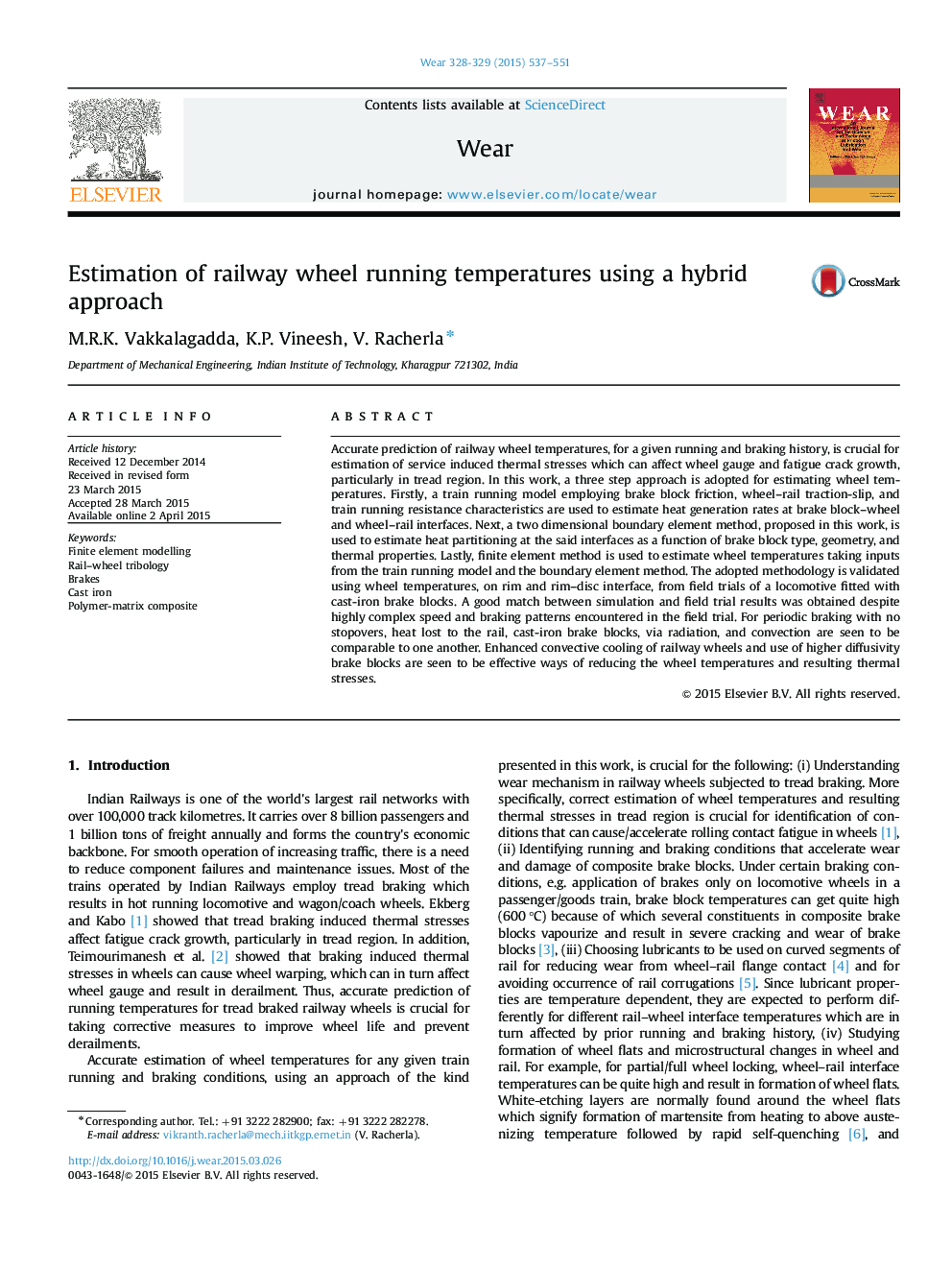| Article ID | Journal | Published Year | Pages | File Type |
|---|---|---|---|---|
| 7004442 | Wear | 2015 | 15 Pages |
Abstract
Accurate prediction of railway wheel temperatures, for a given running and braking history, is crucial for estimation of service induced thermal stresses which can affect wheel gauge and fatigue crack growth, particularly in tread region. In this work, a three step approach is adopted for estimating wheel temperatures. Firstly, a train running model employing brake block friction, wheel-rail traction-slip, and train running resistance characteristics are used to estimate heat generation rates at brake block-wheel and wheel-rail interfaces. Next, a two dimensional boundary element method, proposed in this work, is used to estimate heat partitioning at the said interfaces as a function of brake block type, geometry, and thermal properties. Lastly, finite element method is used to estimate wheel temperatures taking inputs from the train running model and the boundary element method. The adopted methodology is validated using wheel temperatures, on rim and rim-disc interface, from field trials of a locomotive fitted with cast-iron brake blocks. A good match between simulation and field trial results was obtained despite highly complex speed and braking patterns encountered in the field trial. For periodic braking with no stopovers, heat lost to the rail, cast-iron brake blocks, via radiation, and convection are seen to be comparable to one another. Enhanced convective cooling of railway wheels and use of higher diffusivity brake blocks are seen to be effective ways of reducing the wheel temperatures and resulting thermal stresses.
Related Topics
Physical Sciences and Engineering
Chemical Engineering
Colloid and Surface Chemistry
Authors
M.R.K. Vakkalagadda, K.P. Vineesh, V. Racherla,
